Children Teaching

What are the benefits of teaching children about climate change ?
Teaching children about climate change is crucial for their future, empowering them to take action and make a difference. It enhances their awareness, critical thinking skills, environmental stewardship, innovation, preparation for future careers, empathy, responsibility, healthy habits, resilience, and interest in science and technology. This education can lead to informed decision-making, problem-solving abilities, responsible behavior towards the environment, and a sense of global citizenship. By teaching children about climate change, we are preparing them to confront one of the most significant challenges facing our planet.

What are the best practices for teaching children about money management and savings ?
Teaching children about money management and savings is an essential life skill that can help them develop good financial habits. Here are some best practices for teaching children about money management: 1. Start early: Even toddlers can understand basic concepts like saving and spending. Use everyday opportunities to talk about money and its value. 2. Lead by example: Children learn by example, so it's important to model good financial habits yourself. Show them how you budget, save, and make decisions about spending. 3. Use allowances wisely: Giving your child an allowance is a great way to teach them about money management. Encourage saving, teach spending, and introduce giving as part of their allowance. 4. Play money games: Board games and online games can be fun and educational at the same time. Some popular ones include Monopoly, The Game of Life, and PiggyBot. 5. Involve them in family finances: Involving your children in family finances can help them understand the real-world implications of money management. Have them help you create a budget, go grocery shopping with you, and talk to them about bills and expenses. Remember to be patient, consistent, and positive when teaching children about money management and savings. With these best practices, your child will develop good financial habits that will serve them well throughout their life.

How can parents balance work and home teaching strategies for their children ?
Parenting in the modern era is a challenging task, especially when it comes to balancing work responsibilities with home teaching strategies for children. Here are some tips: - Set priorities by identifying what is most important and allocating time accordingly. - Create a routine that provides structure and predictability for both parents and children. - Utilize technology as a tool for supplementing learning outside of traditional school hours. - Involve children in household chores to teach them valuable life skills while also freeing up more time for parents. - Seek support from others such as grandparents, babysitters, or other family members who are willing to lend a hand.

How can parents implement successful home teaching strategies for their children ?
This article discusses successful home teaching strategies that parents can implement for their children. The key strategies include creating a conducive learning environment, setting clear goals and expectations, encouraging active learning, using positive reinforcement, fostering open communication, and modeling good study habits. These strategies aim to support children's academic growth and help them develop essential life skills.

What are effective home teaching strategies for children with learning disabilities ?
Effective home teaching strategies for children with learning disabilities include identifying the child's learning style, using multisensory approaches, breaking down tasks into smaller steps, using repetition and practice, providing positive reinforcement, and creating a supportive environment. These strategies can help parents help their children overcome challenges and achieve success in their academic endeavors.

What are some effective strategies for teaching climate change to young children ?
Teaching climate change to young children can be a daunting task, but it is crucial to help them understand the impact of their actions on the environment. Here are some effective strategies for teaching climate change to young children: Start with simple explanations, use visual aids, encourage hands-on learning, involve them in environmental activities, use storytelling, discuss solutions, make it relevant to their lives, and encourage critical thinking.

What are the best home teaching strategies for children with ADHD ?
The article presents a comprehensive guide on effective home teaching strategies for children with ADHD, emphasizing the importance of structured routines, distraction-free environments, task breakdown, time management tools, incorporation of movement breaks, visual aids, immediate feedback, and open communication. These strategies aim to enhance focus, reduce anxiety, and improve overall academic performance and well-being for children with ADHD.
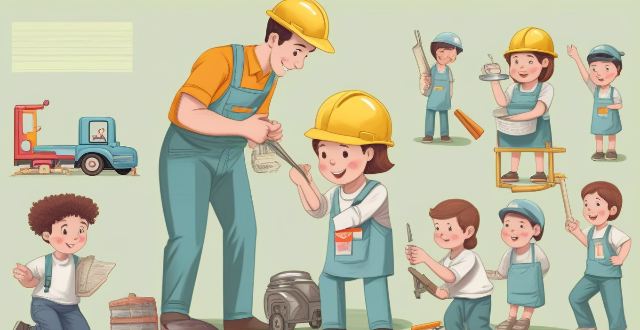
How can parents effectively teach their children about safety ?
Teaching children about safety is crucial for their well-being. Parents can effectively teach their children about safety by establishing clear rules, educating them about potential dangers, practicing safety drills, encouraging open communication, and modeling safe behavior. By doing so, children will develop awareness and the ability to protect themselves from potential dangers.
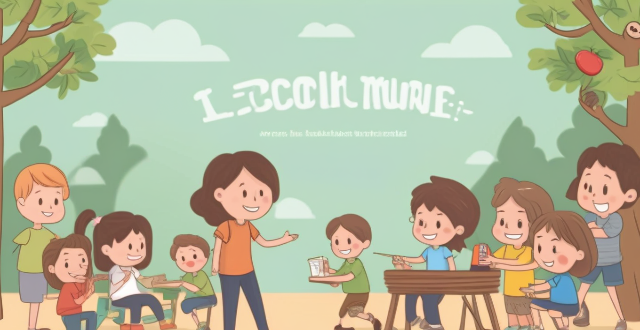
How do home teaching strategies impact a child's academic performance ?
Home teaching strategies refer to the methods and techniques parents use to support their children's learning outside of school. These strategies can have a significant impact on a child's academic performance, as they provide additional opportunities for learning and help reinforce concepts taught in the classroom. In this response, we will explore the various home teaching strategies and how they influence a child's academic success. Parents play a crucial role in encouraging and motivating their children to learn. By showing interest in their child's education and expressing positive expectations, parents can help build their child's confidence and self-esteem. This, in turn, can lead to increased engagement in learning activities and better academic performance. Parents should set clear goals and expectations for their children's academic achievement. This helps children understand the importance of education and provides them with a sense of direction. When parents establish high but realistic expectations, children are more likely to strive for excellence and achieve better results. Creating a supportive learning environment at home is essential for fostering academic success. Parents should ensure that their children have a quiet, well-lit space for studying, as well as access to necessary resources such as books, computers, and educational software. Additionally, parents should establish regular study routines and minimize distractions during designated study times. Reading aloud to children is an effective way to improve their vocabulary, comprehension skills, and overall literacy development. Parents should make reading a daily habit, selecting age-appropriate books that align with their child's interests and reading level. Writing is an essential skill that requires consistent practice to develop. Parents can encourage their children to write by providing them with opportunities to express themselves through journaling, storytelling, or letter writing. Providing feedback on their writing efforts can also help children improve their writing skills over time. Mathematics is a subject that benefits from regular practice and exposure to new concepts. Parents can support their child's mathematical development by providing them with challenging problems and puzzles to solve. This not only helps reinforce math skills learned in school but also promotes critical thinking and problem-solving abilities. Inquiry-based learning involves allowing children to explore topics of interest through hands-on experiences and investigation. Parents can support this type of learning by providing resources such as science kits, nature exploration guides, or access to online resources that allow children to engage in inquiry-based activities. Home teaching strategies have a significant impact on a child's academic performance. By involving themselves in their child's education, setting goals and expectations, and providing a supportive learning environment, parents can help their children achieve academic success. Additionally, employing effective home teaching strategies such as reading aloud, encouraging writing practice, providing mathematical challenges, and promoting inquiry-based learning can further enhance a child's academic development.

What are some practical tips for teaching road safety to children ?
Teaching road safety to children is crucial for their well-being. Start by talking about traffic signals, pedestrian crossings, and the importance of looking both ways before crossing. Use visual aids like books, videos, and games to make learning fun. Practice what you've taught in real-life situations, such as crossing the street or role-playing different scenarios. Set a good example by following traffic rules yourself and avoiding distractions. By doing so, you'll help your child develop good habits that will keep them safe on the road.

What are some effective strategies for teaching water safety to children ?
Water safety is an essential skill that every child should learn, especially during the summer months when they are more likely to be around water. Here are some effective strategies for teaching water safety to children: Start early, set clear rules, use visual aids, practice makes perfect, role playing, stay close and supervised, teach risk assessment, and be a good example.

How can parents promote healthy developmental milestones in their children ?
This article provides tips for parents on how to promote healthy developmental milestones in their children, including providing a stimulating environment, encouraging social interaction and physical activity, teaching self-care skills, and fostering independence.
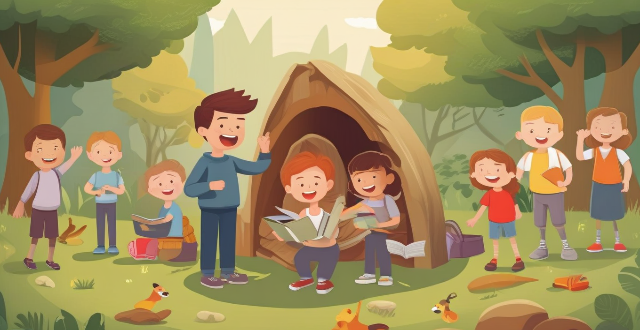
How can children be encouraged to speak up if they feel unsafe ?
The article emphasizes the importance of creating a safe and supportive environment for children to express themselves without fear of judgment or criticism. It suggests educating children about personal safety, role-playing different scenarios, and discussing potential consequences of not speaking up if they feel unsafe. The article also recommends teaching children who to trust, encouraging them to use their voice, and providing options for seeking help. Overall, it highlights the significance of empowering children to take action and advocate for their own safety.

How can parents use technology to enhance home teaching strategies for their children ?
This text discusses how parents can use technology to enhance their home teaching strategies for their children. It suggests using interactive learning apps, online tutoring services, educational websites, and virtual reality/augmented reality technologies as tools to create a richer and more engaging learning environment. The text emphasizes the benefits of these technologies, including personalized attention, flexibility, access to expert tutors, enhanced engagement, improved retention, and increased accessibility.

What are some innovative methods for teaching climate change in schools ?
Innovative Methods for Teaching Climate Change in Schools Climate change is a pressing issue that requires innovative approaches to teaching. Here are some methods that can help engage students and promote critical thinking: 1. Interdisciplinary Learning 2. Project-Based Learning (PBL) 3. Service Learning 4. Technology Integration 5. Inquiry-Based Learning 6. Field Trips and Experiential Learning

What are some creative home teaching strategies for young learners ?
Teaching young learners at home can be a challenging yet rewarding experience. To make the most of this opportunity, it's essential to employ creative strategies that engage children and foster a love for learning. Here are some innovative approaches to consider: 1. Incorporate Hands-On Activities: Children learn best through hands-on experiences. Incorporating activities like arts and crafts, science experiments, or cooking projects can help reinforce concepts and make learning fun. 2. Use Multimedia Resources: Utilize various forms of media to cater to different learning styles and keep lessons interesting. 3. Create a Learning Environment: Design a space at home dedicated to learning that is both comfortable and conducive to study. 4. Encourage Independent Learning: Foster self-directed learning by allowing children to explore topics they are interested in. 5. Make Learning Relevant: Connect new information to your child's life experiences to enhance understanding and retention. 6. Set Goals and Rewards: Establish clear goals and reward systems to motivate young learners. 7. Involve the Whole Family: Involve other family members in the learning process to create a supportive community atmosphere.

What role does collaborative learning play in innovative teaching approaches ?
The text discusses the importance of collaborative learning in innovative teaching approaches, emphasizing how it enhances student engagement, promotes critical thinking, develops communication skills, encourages autonomy and self-direction, and fosters teamwork and leadership skills.

What are some successful methods for teaching reading to children with special education needs ?
Successful methods for teaching reading to children with special education needs include multisensory instruction, individualized instruction, structured literacy approaches, differentiated instruction, technology-enhanced learning, collaboration with parents and caregivers, and inclusive classroom practices. These strategies aim to provide tailored, engaging, and supportive environments that cater to the unique needs of each child, promoting their reading development and overall educational success.

What are some effective ways to teach children about climate change ?
Teaching children about climate change is crucial for their future and the planet's well-being. Here are some effective ways to educate them on this important topic: 1. Use age-appropriate language that they can understand, avoiding complex scientific terms. 2. Incorporate interactive learning through games or experiments that demonstrate the effects of climate change. 3. Discuss real-life examples of climate change, such as extreme weather events like hurricanes, floods, and droughts. 4. Encourage critical thinking by asking open-ended questions about climate change and encouraging problem-solving skills. 5. Involve children in solutions by participating in community clean-up events, planting trees, or reducing energy consumption at home. 6. Integrate technology through educational apps, videos, and websites that provide engaging and informative content on climate change. 7. Foster empathy for nature by encouraging children to spend time outdoors and appreciate the beauty of the natural world. By using these effective methods, we can help children understand the importance of protecting our planet and inspire them to take action against climate change.
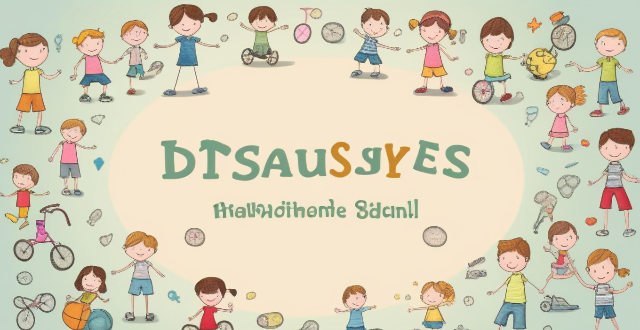
What role do sports play in character building for children ?
The article discusses the various ways in which sports contribute to the overall personality development of children. Sports ensure physical health and well-being, teach valuable life skills such as teamwork, leadership, communication, and goal setting, impact emotional development by boosting self-esteem, teaching resilience, and handling pressure, provide opportunities for socialization, and play a crucial role in moral development by instilling values such as integrity, respect, and responsibility. The author concludes that sports are not just about physical fitness but are powerful tools for character building in children.
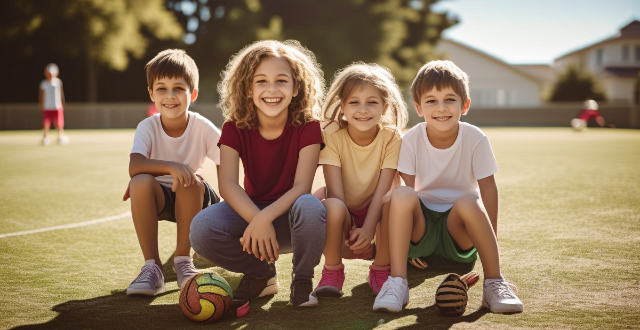
In what ways do sports help with emotional regulation in children ?
Engaging in sports can significantly aid children in developing emotional regulation skills by promoting stress reduction, enhancing self-esteem, developing resilience, encouraging teamwork and social interaction, teaching discipline and self-control, providing an outlet for energy, and promoting mindfulness.
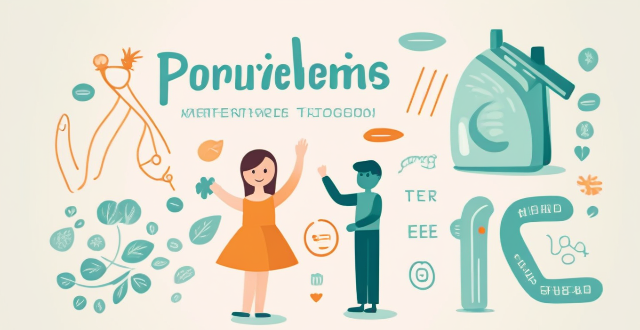
How can I protect my children from electrical hazards ?
The text provides a comprehensive guide on how parents can protect their children from electrical hazards. It emphasizes the importance of education, preventative measures, emergency response, and parental supervision in ensuring electrical safety for kids. The key steps include teaching children about electricity using simple language and visual aids, role-playing safe vs. unsafe scenarios, covering all outlets with plugs or surge protectors, childproofing the home by securing loose wires and unplugging devices when not in use, proper placement of devices away from water sources, regular inspections for faulty wiring, learning first aid including CPR training, keeping emergency numbers handy, supervising young children around electrical devices, and setting rules and boundaries regarding electrical safety. By following these guidelines, parents can significantly reduce the risk of electrical hazards affecting their children, emphasizing that vigilance and proactive measures are crucial for maintaining electrical safety in the family.

How can teachers effectively integrate multimedia resources into their innovative teaching methods ?
Integrating multimedia resources into teaching methods can greatly enhance the learning experience for students. Teachers should identify learning objectives, choose appropriate tools, create interactive lessons, encourage student participation, integrate technology in assessments, provide access to online resources, and continuously evaluate and update their methods. This approach ensures that teaching remains innovative and engaging for students.

How can artificial intelligence be integrated into classroom teaching ?
Artificial intelligence (AI) can revolutionize classroom teaching by enhancing student engagement, personalizing learning experiences, and improving educational outcomes. Adaptive learning systems create personalized learning pathways and provide real-time feedback, while intelligent tutoring systems offer individualized coaching and progress tracking. Automated grading and assessment streamline the evaluation process, virtual learning assistants provide round-the-clock support, and data analytics tools inform instructional decisions. AI-powered group projects and peer feedback mechanisms facilitate collaborative learning environments. Integrating AI into classroom teaching has the potential to transform education by creating more engaging, personalized, and efficient learning experiences for all students.

How can I improve my teaching skills as a fitness instructor ?
This article provides tips on how to improve teaching skills as a fitness instructor. It suggests developing knowledge of fitness and exercise science, enhancing communication skills, creating engaging workouts, and continuously evaluating and improving teaching methods. The article emphasizes the importance of staying up-to-date with current research and best practices, practicing active listening and empathy, designing well-rounded fitness programs, fostering a supportive community within classes, seeking feedback from clients, and reflecting on one's own performance. By following these tips, fitness instructors can provide higher quality service to their clients and achieve better client outcomes.
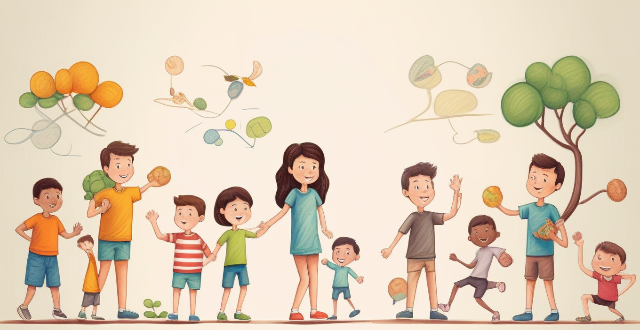
How does exercise influence social skills in children ?
Exercise plays a crucial role in shaping children's social skills by enhancing communication, empathy, emotional intelligence, resilience, problem-solving abilities, healthy risk-taking, and leadership skills. Physical activity helps children build self-confidence, promotes teamwork, develops empathy, enhances emotional intelligence, increases resilience, enhances problem-solving abilities, encourages healthy risk-taking, and fosters leadership skills. These skills are essential for establishing positive relationships with peers and contributing to their communities. Therefore, it is imperative to encourage children to engage in regular exercise to support their overall development and success in life.

What are some innovative teaching methods that can enhance student engagement ?
Innovative teaching methods, including Project-BasedInnovative teaching methods, including Project-Basedroom, Gaming and Simulation Gaming and Simulations, Peer Teaching and Tutoring, Technology Integration, and Service Learning, are designed to enhance student engagement by fostering critical thinking, problem-solving, collaboration, and real-world application of knowledge. These approaches aim to make learning more interactive, relevant, and enjoyable for students, ultimately contributing to their academic success and personal growth.